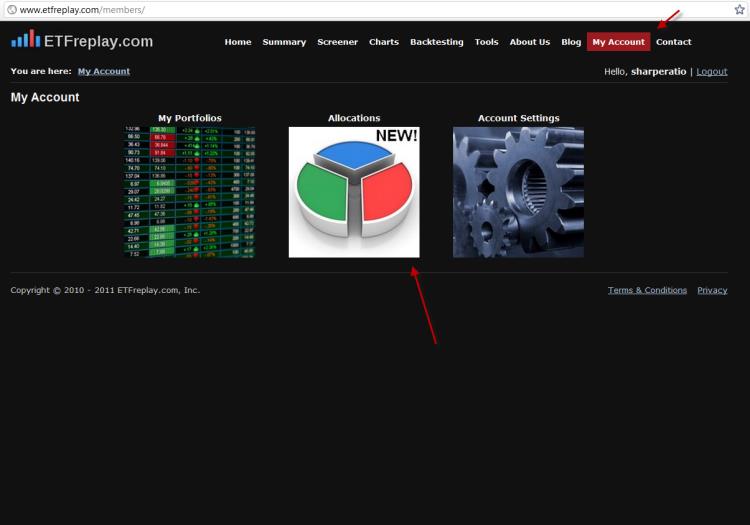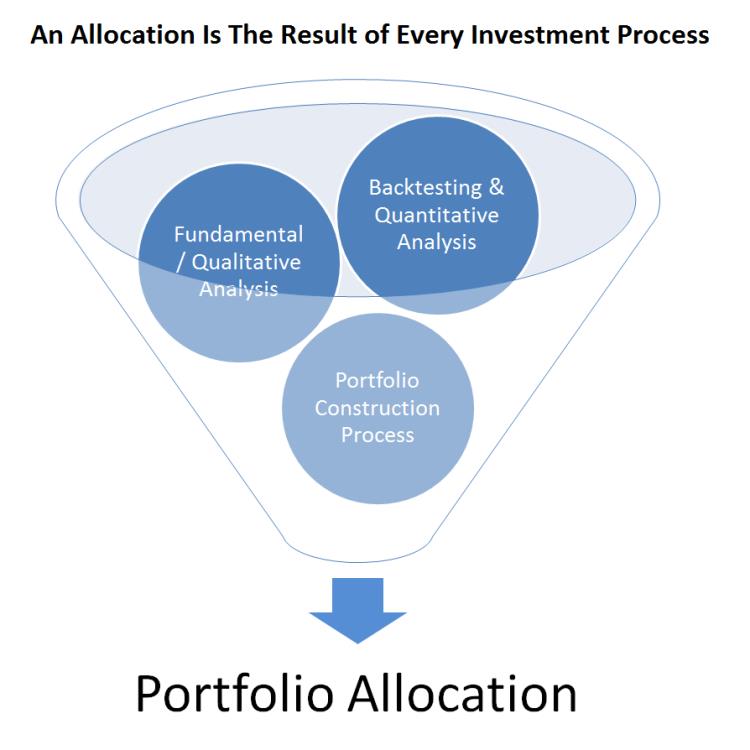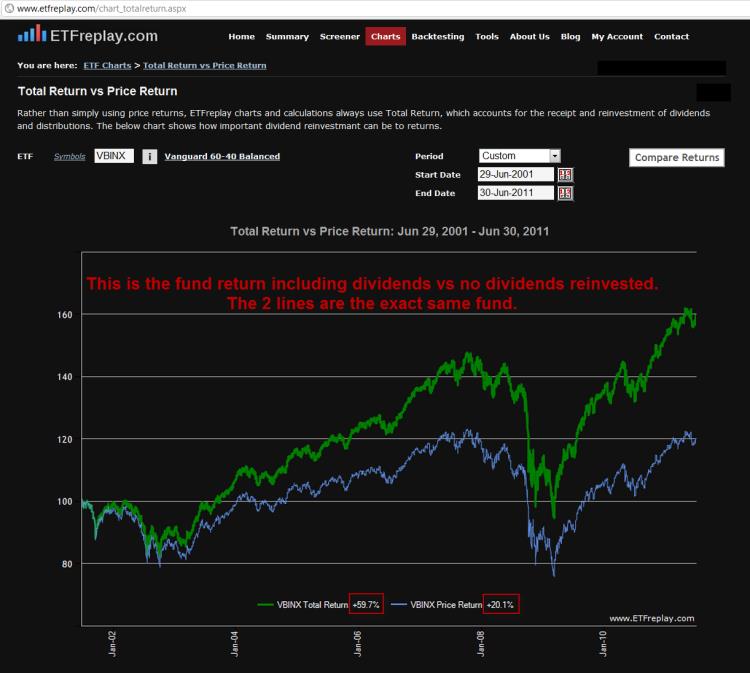Nov 10, 2011
in Tracking Error
We realize we've written a number of blogs now about 'nuances' in financial analysis. This is the nature of it; you must learn some of the details involved in assumptions. It is a part of what being a financial analyst is about.
The nuance we will discuss here concerns 'tracking error.' Tracking error just means how closely the ETF price reflects the underlying portfolio value.
The way an ETF provider measures ETF tracking error and posts on their website is to calculate the midpoint of the closing bid-ask spread vs the underlying per share value of the benchmark it is tracking. The nuance here is that this is not how regular closing price is determined in your brokerage or quote service.
Closing price defaults to the last trading price of the day. So we have a mismatch. On the one hand, if you went to trade a given ETF, you obviously would get it near the bid or ask. But if you are looking at the official exchange closing price on any given day, it will be the last price -- not the closing bid-ask midpoint.
This actually has important implications in backtesting as you could have large tracking error on market price -- even if there is low tracking error as calculated by the ETF providers.
Happily, there is an easy way to adjust for this; only use data where the ETF is liquid (and WAS liquid for the backtest period under analysis). If the ETF is liquid, it will actually be trading at the end of day and the closing price and the midpoint of the closing bid-ask will be very close and so true tracking error will be small.
We will point out that in this case, it is not that the ETF providers are doing something wrong --- they are showing a good reflection of an actual trade if done at the close. It is clearly up to the financial analyst to think about this and do their own diligence. You are the one responsible for your decisions in the end -- nobody else.
Let's say an ETF only trades a few times a day -- and let's say that on a particular day the last price was 10am. Then let's say the underlying index moved materially up or down into the close -- the closing price would reflect the 10am price -- despite clearly not being a true price you could trade -- and note that this difference would NOT be considered 'tracking error' because that is determined by the midpt of the closing bid-ask. But there clearly will be substantial tracking error using closing price data when the security is illiquid.
Again, there is a simple solution to this --- only use data where there there is substantial liquidity. We have hundreds of choices of liquid ETFs that have been liquid for many years now -- you don't have to bother with the 8th US Consumer Discretionary ETF that is slightly different than the first 7 but trades no volume. The data won't be any good. If its a valid investment -- 9 times out of 10 it will get to liquidity relatively quickly. If you want to use less liquid ETFs, that is fine so long as you understand the difference. Take pride in understanding these nuances, for it's part of being a good analyst.
Related to this topic, take note that we've listened to user requests and added a page to show New Additions to ETFreplay. We will continue to add any ETF that trades at least some level of volume. For what its worth, ETFreplay already covers >98% of overall ETF/ETN assets and >98% of the volume traded. The bottom 400 ETFs (some of which we do include if they are interesting new products) make up about 1% of overall ETF/ETN industry assets. There are plenty of choices already. Other than the handful of innovative new ETFs that come out every 6-12 months, focus your efforts on the existing liquid ones.
Sep 19, 2011
We have added a new module to ETFreplay.com that expands the functionality in a logical way. It is located on the My Account tab:

ETFreplay.com has advanced methods for screening and backtesting various relative strength and moving average strategies. The ETFreplay.com community runs thousands of backtests and it makes sense to see how members may be able to help each other with shared research ideas.
If you think about portfolio management, it doesn't matter what your process is --- in the end, when each day closes --- you have a portfolio filled with securities. Even if your portfolio is mostly cash, that is still an allocation. So our new Allocations module allows you to go to the final step in a process -- that is, take everything you know --- from fundamental to quantitative etc... and create an allocation. Once set-up, we will automate the tracking of the total return -- as well as calculate some of the most important items --- such as your portfolio volatility and portfolio drawdowns and sharpe ratio etc...
Importantly, you can do this privately if you would like --- or you can place the allocation you create on the public Allocations Board. You create your own customized fund symbol (ie, ETFRS) to identify the allocation. You can comment on each others allocations or choose to have comments turned off. You can keep watch lists of various strategies (from those which have chosen to be public). You can delete or create new allocations. We have tried to design it in a way that simply helps you to make better portfolio decisions. And as we've done with all of our applications, we will make the module significantly better over time.
ETFreplay.com has provided research applications that aid in the investent process --- but we simply can't model every possible variation of your requests into a few clicks. After you have researched and tested some ideas and have weighed all the variables and then have decided what to do, what we can do is capture the final allocation that you enter.
Note that we have installed some rules that may seem a bit rigid at first --- but these rules are necessary as we do not want to have this become a short-term trading competition. This is about portfolio management, not the latest earnings speculation or the macro news-of-the-day. The graphic below is one way to visualize the process as we see it.

Note that you can set an allocation to begin and it will use that days closing values. You can update on any day and it will then save the result of the historical fund return and subsequently combine that with the return of the new allocation. We will capture the total return of all securities (adjusting for dividends & cap gains distributions) so that your income securities are properly tracked. We know that relative to a real account, sometimes you will get a price that is different than the closing price -- but this is an allocation app and its purpose is to show various types of portfolio strategies --- not to perfectly mimic intraday trades.
Over the long-run, allocation moves are the overwhelmingly dominant factor in portfolio performance. Sometimes you may get into an ETF at a price $0.25 better than the closing price --- but this will be partially offset by the times your entry is worse. In the long-run, this is a lot less important than other factors.
We have been in beta testing on this the past few months and have worked out many of the details. We plan to add various features to this module over time. We are calling this a BETA product for now as we may have some plumbing adjustments necessary depending on how many people find use in this module and will surely have to allow for the scaling of data should many people like this feature. So please give it a try and tell us how you like it -- it is included in your existing subscription so there is no additional cost. We are excited about the potential this new application has should the ETFreplay.com community begin to share ideas and learn from each other not just through talk --- but through portfolio allocation actions.
Jul 21, 2011
in Total Return
Total return is a concept that is surprisingly misunderstood. We get emails asking why does our moving average not match Yahoo or Tradestation?
Most Internet data sources and brokerage software platforms don't track total return -- yet total return is how all index returns are stated. In 2010, the SPDR S&P 500 index fund (SPY) was not +12.8%, it was up 15.1%. Vanguards investment grade bond fund (VCIT) was not +5.1% in 2010, it was +10.0% (and had some nice tactical swings throughout the year). The difference was distributions (which come in 2 forms: dividends and capital gains distributions).
One common thing we see is for various people to compare their performance to the price-only +12.8% and then footnote it saying 'dividends excluded'? To us, this is just as bad as mutual funds that claim the expense ratio is 1.2% and then footnote it saying you will be charged a 3% redemption fee if you sell the fund in first 5 years. There are no hidden fees with ETFs -- no sales loads, no purchase or redemption fees, no 12-b-1 fees. The 'A-class' 'B-class' 'C-Class' 'H-Class' 'I-class' mutual fund system is non-sensical in the ETF world --- there is only a single class of an ETF.
Here is another one: the Vanguard 60-40 stock-bond balanced fund returned +20.1% for the 10 years ended June 30th, 2011 [1]
[1] excludes dividends
Well, a large part of owning a bond in the first place is the coupon. As it turns out, that index fund (VBINX) was +59.7% INCLUDING dividends. So it is entirely disingenuous to compare to a number that is one-third of the actual index return.

While this is all obvious to some -- it is clearly still not understood by many.
We created a free Comparison Tool to make it easy to view this concept as we feel the only REAL way to truly understand something fully is to interact with it through an application -- rather than just read about in a paper or on a blog.
Try a few out. Be aware that even if its not a large dividend payer, any capital gains distribution will also affect the return.
Bond ETFs:
Others:
Jun 29, 2011
in Video
A brief introduction to the versatile yet easy-to-use 'Compare Portfolios' application located on the backtest page
Mar 18, 2011
in Backtest
It is well accepted in professional money management that having a quantitative aspect to your investment process is additive. That is, quantitative methods can greatly help in screening and monitoring lists of securities into a manageable ranking for further analysis. The vast majority of institutional-oriented firms do this kind of thing.
The classic, basic steps of an investment process involve:
- Install a (Quantitative) Method To Rank A Relevant Universe of Securities
- Take The Top-Ranked Securities And Do Further Research
- Construct a Portfolio Using Securities That Pass The First 2 Steps
- Monitor And Update The Portfolio
- Repeat
We view backtesting as a very practical and useful part of the research process. The way you rank securities should be based on something consistent with your beliefs on what actually works.
Once you have done some research and found a method to rank securities, run some backtests. You will learn about your method greatly and can understand more aspects and characteristics of such strategies. You will speed up your understanding and you will be forced to think through all the details of how you are going to execute your process.
Once you have created a portfolio (per Step 3 above), that portfolio effectively now becomes a ‘forward-test.’ Monitoring these portfolios and seeing these various rotation strategies behave is a crucial part of the process. Track your various rotation strategies. You can learn a lot by running many simultaneous ‘forward tests’ at once. Importantly, you will get a feeling for the ‘short-term noise’ that occurs around your strategy. Even for professionals, the psychological aspects of short-term volatility will cause them to doubt themselves. Back/Forward tests will make you much more aware of the kind of thing you will face in the future. You must get used to this as psychological aspects to investing are absolutely critical.
Back/forward-testing accelerates the learning process and you can then feed the incremental improvements you discover back into your actual portfolio. The point is that just doing a backtest and then ‘stopping your research’ is very limiting. Don’t stop learning, don’t stop improving. Small incremental improvements add up over time.
We are entering the golden age of active indexing. The specialized, targeted index fund is really a somewhat new phenomenon. Index funds in the 1980s were all very broad vehicles. Many specialized index products (Vanguard REIT index mutual fund, country fund ETFs) actually only have histories back to 1996. You can simulate prior performance -- but they weren't so inexpensively accessible. TIPS securities weren’t even issued by the Treasury until 1997. The World Equity Index products (mutual fund AND etf) didn’t launch until 2008.
Important new areas of future investment may come from newly investable products. For example, the emerging markets small cap index might become as mainstream a product as some other well-accepted benchmarks are today. Understanding the important indices of tomorrow might be as good an idea as understanding REIT and emerging markets indices when they were new PRODUCTS (ie, investable and tradeable at reasonable cost).
Understanding and processing relative performance, relative volatilities and observing relative drawdowns in present ‘forward-test’ environment strikes us as a pretty good idea.
iShares is bringing to market an Internationally focused preferred stock index. Wisdomtree just launched an Asia-Pacific regional intermediate bond ETF. Remember that at one point, the emerging markets index mutual fund was brand new (1994). Today it is a primary index everyone follows. Growth vs value wasn’t mainstream until the 1990s -- and indexing these products came later. The world evolves. Embrace the change and learn from it – let many simultaneous forward tests accelerate the learning.